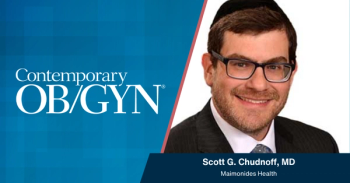
The changing face of the Internet
Much has changed in the World Wide Web in the 3 years since the first Internet issue of Gynaecology Forum (www.obgyn.net/medforum.asp) was published in September 2000. At that time it was still necessary to cover the history of the Internet and explain the requirements needed to access it.
Much has changed in the World Wide Web in the 3 years since the first Internet issue of Gynaecology Forum (
Consumers use the Internet in many ways, from accessing information to booking holiday and theatre tickets, online banking, downloading music and home shopping. Not only do they buy books and CDs but they can also buy medicines online at lower prices than in their local pharmacy.
An Internet shift has also occurred in the field of health care: hospital information systems frequently use Web technologies to extract data from hospital databases. Only a middleware layer and a communication server are needed to extract patient data from different kinds of databases from different systems into one dedicated, personalised screen layout by a Web browser on the PC of a health care provider.
For consumers or patients, booking appointments via the Internet is becoming a reality. Providers tend to start with a service whereby the patient’s message is a trigger for the hospital staff to call by telephone to confirm the date and time of the appointment. Ultimately the patient completes a secure form on the Web on which she can give her medical history, any allergies, and the names and dosages of the drugs she is currently using if this is not already known. Experiments show that one advantage of online form-filling is that the patient is more honest in answering questions on difficult topics such as sexuality, drug abuse or depression. Depending on her complaint or other reason for seeking contact, she can be put in contact with an appropriate doctor. If she has an abnormal Pap smear, a colposcopy and maybe a loop excision of the transformation zone can be planned for the visit. She can browse customised information and download it for further reading. Provision of information can help allay any fears or anxiousness. It reassures the patient, who, as shown in a recent Dutch study, values information from her own physician above that from other sources.
At the same time the patient’s data are stored as preliminary information in the medical record, which the doctor can read before the patient enters the consulting room. The electronic form on the computer monitor follows the algorithm of the guideline appropriate for the patient’s symptoms or complaints. If new questions arise after the patient has seen the doctor, contact by email can reduce the number of follow-up visits and thus save time for both patient and doctor. Subsequently the doctor can, if necessary, modify the patient’s prescription online.
Telemedicine
On some health care forums doctors answer general questions asked by consumers who are not their personal patients. A growing number of doctors offer online consultation either via the Web or by email. Sometimes, as in the case of a GP consulting a dermatologist, a webcam can be used to show the skin eruption. In the field of obstetrics and gynaecology, Mark Smith notes that ‘while monitoring for preterm labour is now considered routine in high-risk obstetrical patients in many centres, other programmes have moved on to remote active monitoring of the fetus itself in these high-risk patients’.
Evidence-based medicine and medical education
Internet technology makes evidence-based medicine a real option. Many of us have the experience of going to the library to look for a book or a journal for a particular paper. Today we can have the paper, or at least the abstract, within seconds.
It is impossible to cope with the overwhelming quantity of publications in the field of medicine. Medline adds more than 450,000 publications to its database each year, so even if we read five papers a day, after 1 year we will still be nearly 250 years behind. The Internet enables us to read selected, digested and integrated sources of information such as Cochrane or Up to Date.
The principle of evidence-based medicine replaces keeping up to date by random reading of papers and attending conferences and courses, with asking the questions that arise during daily practice. This of course has implications for the education of new doctors. Michael and Karen Fung Kee Fung show in their contribution how the speciality of obstetrics and gynaecology
Clinical trials and publication: towards open access
Next to patient care and teaching, the third pillar of academic medicine is research. Here we see another aspect of the integration of the Internet into daily life: mapping the human genome would have been impossible without the Internet. For carrying out a simple randomised clinical trial - to enable larger sample sizes, shorter sampling periods and lower costs - the Internet is also a useful tool. The World Wide Web can provide global access, fast interaction and automation, not forgetting its role in recruiting appropriate subjects and publishing the study results.
Discussion about open access publication is a topical one: the author pays for the process of the peer review and the publication but keeps the copyright. Reprints can be obtained free of charge. Other advantages are a very fast publishing time (often within a few weeks) and reaching a much larger audience: via the Internet everybody has access to a paper. The larger publishing companies and most medical societies are showing resistance to these developments, but researchers can play an important role by submitting their papers to journals which adopt the open access idea. For those who are interested in researching the use of the Internet in medicine, interesting papers on the subject can be found in the Journal of Medical Internet Research at
How to find information on the World Wide Web
Every Internet user has a favourite search engine, but almost never is the user aware of the way in which the search engine works. For instance, does it rank the websites that pay the most at the top? Does it specialise for example in health-related topics? Is it a meta-searcher, combining results from other search engines?
It may be that if another issue of Gynaecology Forum within the next 3 years is devoted to the use of the Internet it will no longer be necessary to give guidance on finding information. However, in this issue the review articles give some suggestions for further surfing. For special topics such as endometriosis, contraception and menopause, experts in these fields have shared with us the websites they prefer to use.
How can information be evaluated?
‘There are many recognised criteria for assessing the quality of websites in general and for health information in particular. Amongst the most important criteria for quality are credibility and content. The source of medical information is usually regarded as the main criterion for its credibility. Currency is shown by websites that display the date of the original document or content posting on the Internet, as well as that of any updates. Hierarchy of evidence posted on each website is a reliable indicator of the validity of health research. The accuracy of the contents is usually best judged against rigorously developed, peer-reviewed and published guidelines for each of the topics concerned. Website quality can also be assessed by features such as disclosure, links, design, aesthetics, interactivity and ease of use, which are related more to presentation and usage.’ These words of Pallavi M. Latthe in our 2000 Internet issue were the reason we asked an expert in this field, Carolyn Peterson, to explain the role that trusted third parties can play.
Integration and security
A major issue in the immediate future is how to provide security and how to guarantee privacy, not only the privacy of the patient but also that of the doctor. Integration of Web services with electronic medical records necessitates good coding and secure servers and connections. Some of our colleagues have expressed reservations about using the technology and tell us they are postponing implementation until it is 100% safe and secure. What they do not realise is that the technology already exists. Guidelines and even laws are emerging, some of which are very restrictive.
I hope we can face these challenges and take the next steps, with our patients, towards achieving a better quality of health care.
Newsletter
Get the latest clinical updates, case studies, and expert commentary in obstetric and gynecologic care. Sign up now to stay informed.








